These Were The Protocols At The First Ironman-Brand Event In The U.S. Since The Pandemic

As race dates have approached this year, most athletes now expected that their event will get delayed or canceled. That was the expectation too for many 70.3 Arizona registrants this past weekend, but as the race date approached athletes were given a somewhat surprising update: Race organizers were moving forward.
Race week arrived and it became clear this thing was actually going to happen. The conditions surrounding the event automatically led to a smaller-than-usual field of less than 1,000 athletes (about half the usual size for this event), which helped with social distancing concerns.
The 70.3 in Phoenix this past weekend was a test of sorts for both Ironman and the overall U.S. endurance community, something race director Judy Stowers acknowledged in her welcome letter to athletes. “Things will certainly look a little different this year, and with the efforts of each athlete, vendor, volunteer, spectator, and staff, we can show the world that racing is possible despite the current state of our world.”
So what did these efforts look like? Here’s a rundown of the weekend.
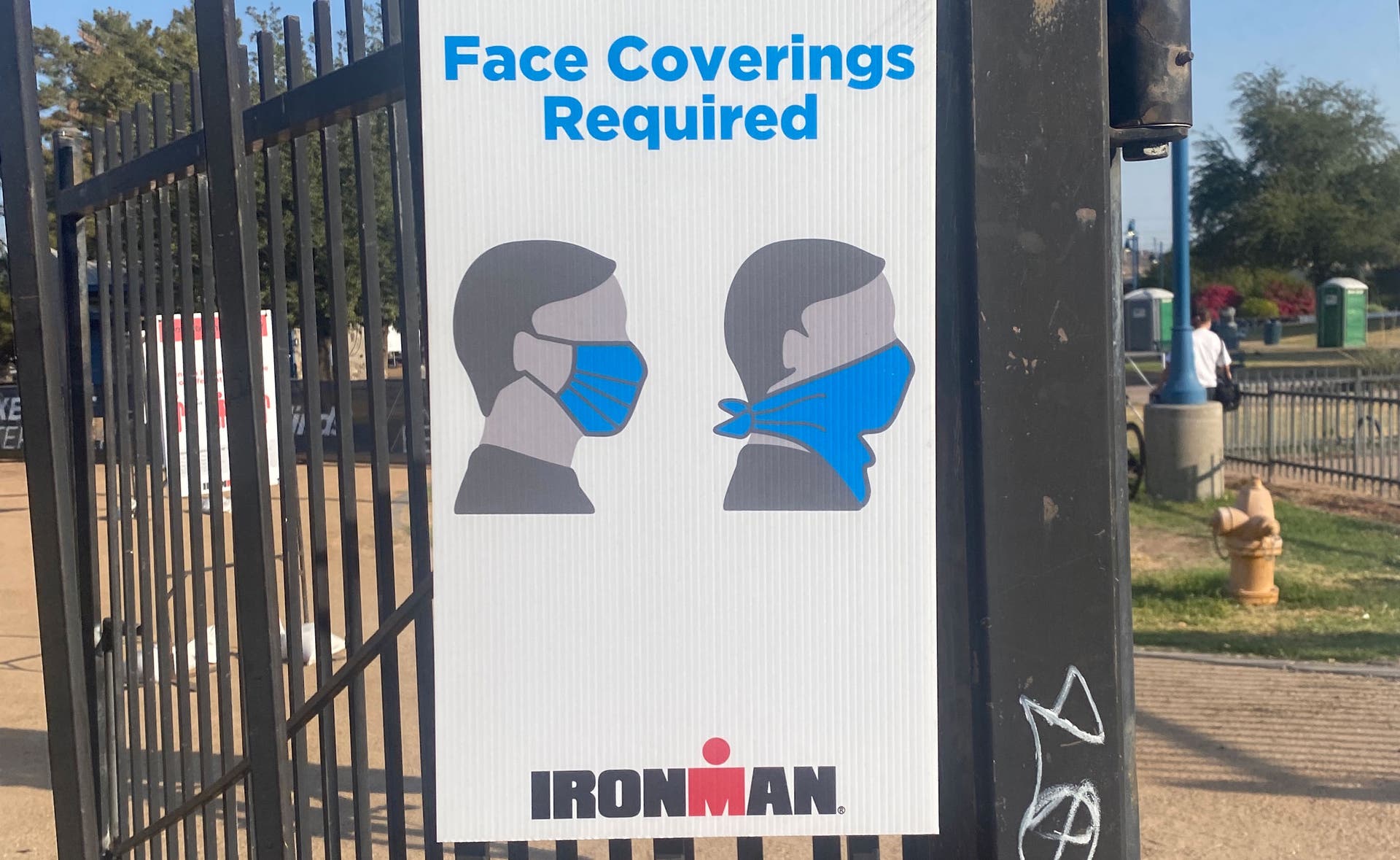
Packet Pick-Up
During race week, athletes were sent an email asking them to choose a one-hour window for picking up their race packet and dropping off their bike on the Saturday before race day. That same email also provided a QR code for athletes to use at the race entry and registration. The entirety of Tempe Beach Park was surrounded by barricades, with security at each entry point. At an “athlete-only” entrance, registered athletes had their temperature taken and had to verbally acknowledge they had no COVID-19 symptoms or were around anyone with symptoms within the last 14 days. Entry was only permitted if the athlete was wearing a mask.
From there, athletes had to show identification and the QR code. Then athletes dropped bikes off in a holding area before heading to registration and were given a valet-like ticket to show upon returning to get their bike. All registration tables had big plexiglass barriers between athletes and volunteers. Part of the registration process was signing a lengthy waiver that covered COVID-19 liabilities.
Athletes then walked back to the bike holding area and put their race number on their bike. Then it was time to put the bike in transition. While there was more space between bikes than we’re used to seeing in transition, it wasn’t a full six feet.
At alternative entrances, spectators had the option of having their temperature taken (and masking up) to enter the general Tempe Beach Park area (though a good majority of the section, including race registration and transition, were designated for athletes only).
The expo was minimal, with an Ironman merchandise tent and a few select vendors. The athlete briefing was available for athletes to view online. The race swag bag included a couple of new additions: a Boco Ironman-branded mask to keep and a disposable mask for use on race morning.
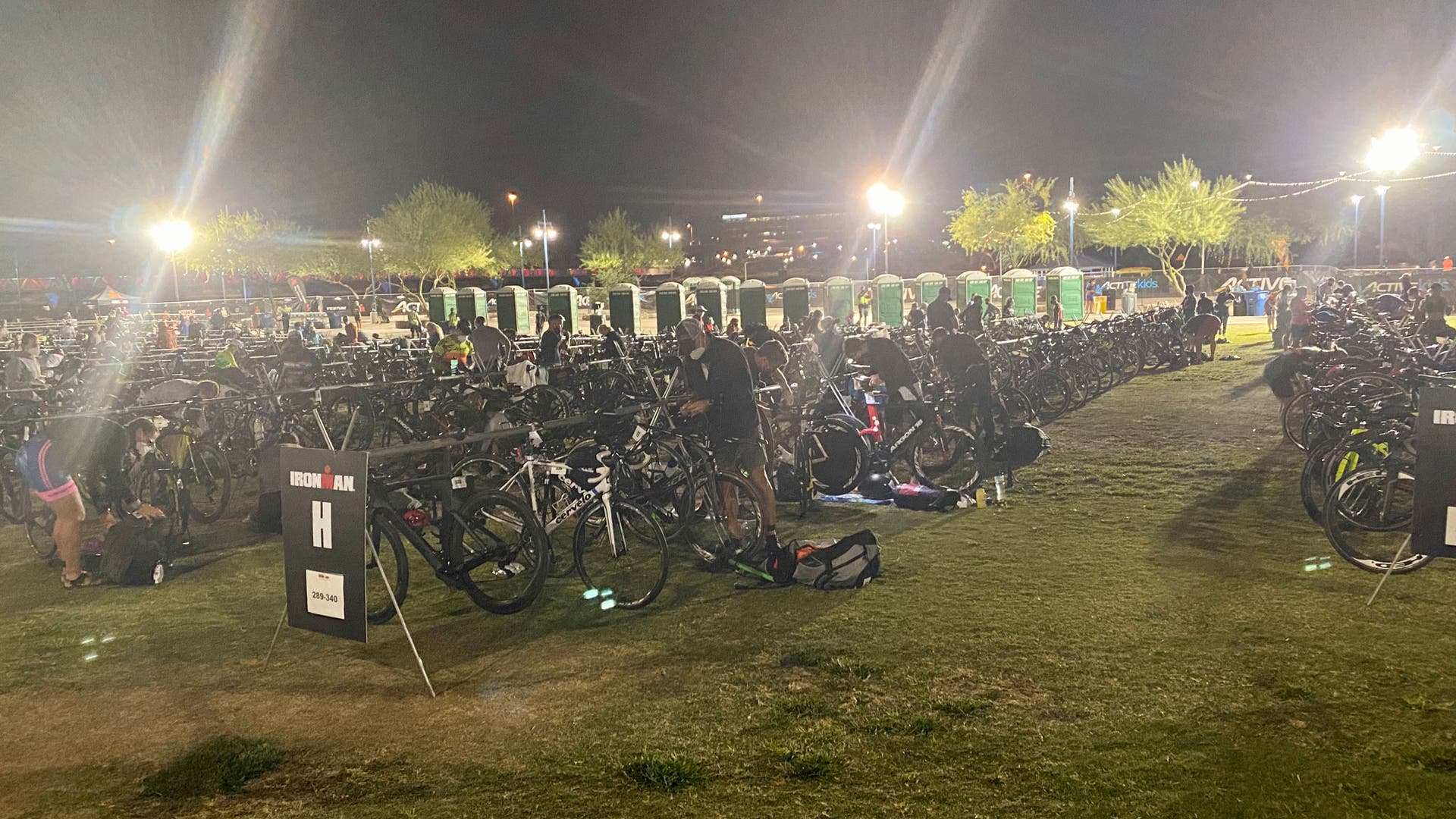
Race Morning
The morning was closer to business as usual than packet pick-up. Athletes were required to wear masks within transition. A couple of small differences that athletes had to plan for: no body marking and no morning clothes bags. Mechanics were still on hand to help with the usual last-minute adjustments, like dealing with the over-inflated tires that had popped in the Arizona sun the previous day. Port-a-potties were placed at least six feet apart within transition with orange tape marking six feet for people waiting in line.
Other than that, there was a fairly normal race-morning feel to the hours leading up to the cannon going off. In general, athletes were respectful of the rules and each other, and the vibe was that everyone was grateful to be racing.
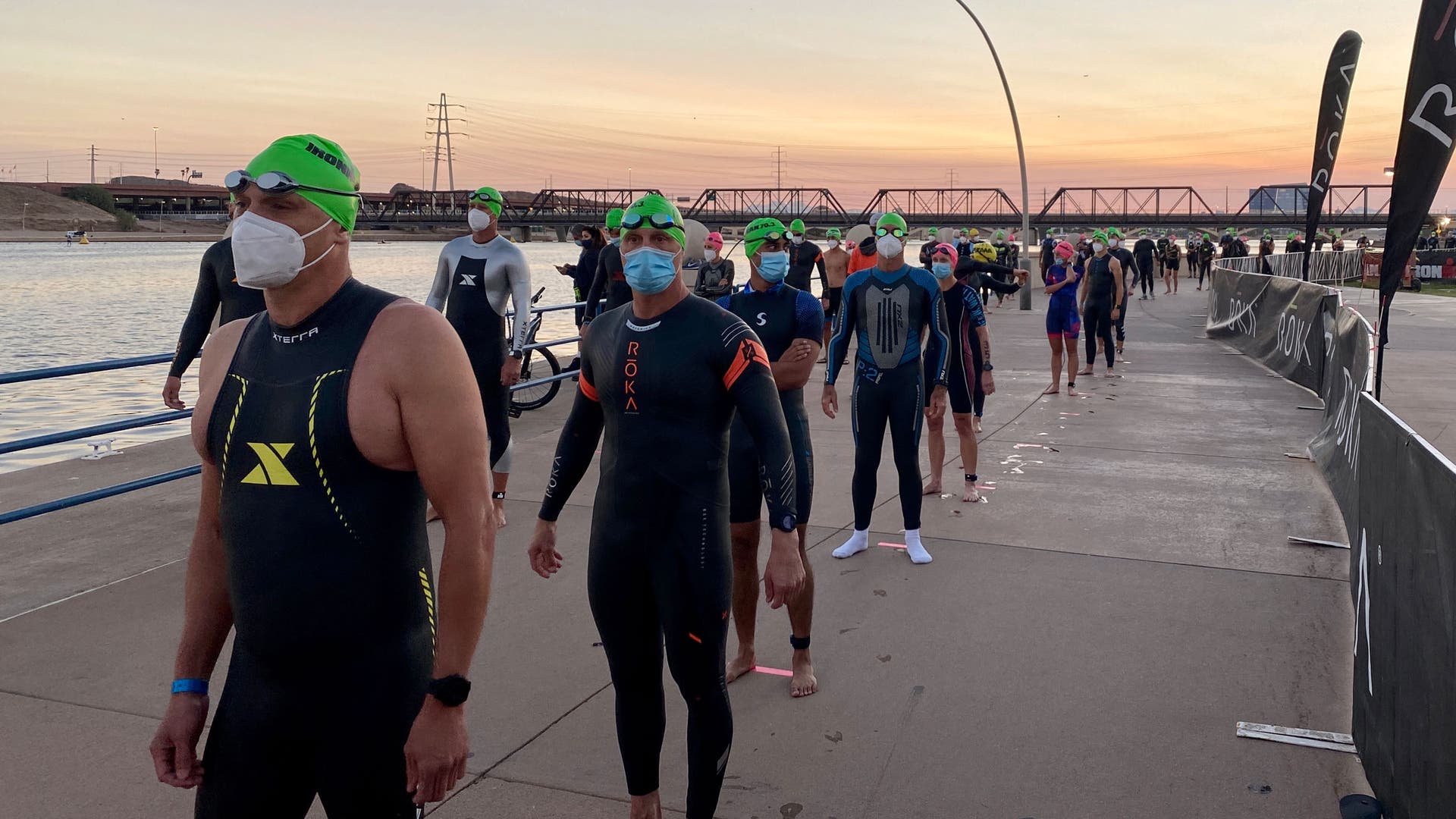
The Swim
Understandably, the staging process for the swim had the most notable changes. About 45 minutes before the 6:20 a.m. swim start, athletes started to head to the west end of the lake where they entered another athletes-only area that required masks. Big fenced off areas designated corrals where athletes could enter based on their anticipated swim time. On the grass within the corral were white spots to help athletes stay six feet apart. The first corral for swimmers with an anticipated finish time of 35 minutes or less lined up at the swim start, with orange Xs designating where they should stand.
Then after the national anthem, it was time for the start. Using a rolling start, with athletes entering the water one at a time at designated intervals, is fairly new for Ironman, but started pre-pandemic. It began with the Ironman Swim Smart initiative and comes with its own controversy—but that’s a debate for another day. Controversy aside, Ironman’s probably grateful it had charged forward with the rolling starts as it allowed for one less obstacle in putting on a race during the COVID pandemic. Instead of wave or mass starts, athletes are more naturally spread out—making social distancing an easier task.
As each athlete approached the timing mat, they waited for their designated “beep” to enter the water. Right before entering the water, athletes disposed of their masks in a trash can. As athletes entered the water, each corral emptied one at a time until every athlete had started the swim.
The swim start was one of the biggest “how do they pull this off?” question marks, and it was probably one of the smoothest, safest parts of the entire event.
After swimming east in Tempe Town Lake, athletes emerged after 1.2 miles with a long run back to transition. This is where the “it is what it is” part of the protocols came into play. Though the smaller number of athletes and the rolling start helped to keep athletes pretty spread out, there wasn’t much they could do to keep athletes at a distance once racing was underway. Overall there were never any huge crowds emerging from the water or bundled up in transition, but there were athletes close together.
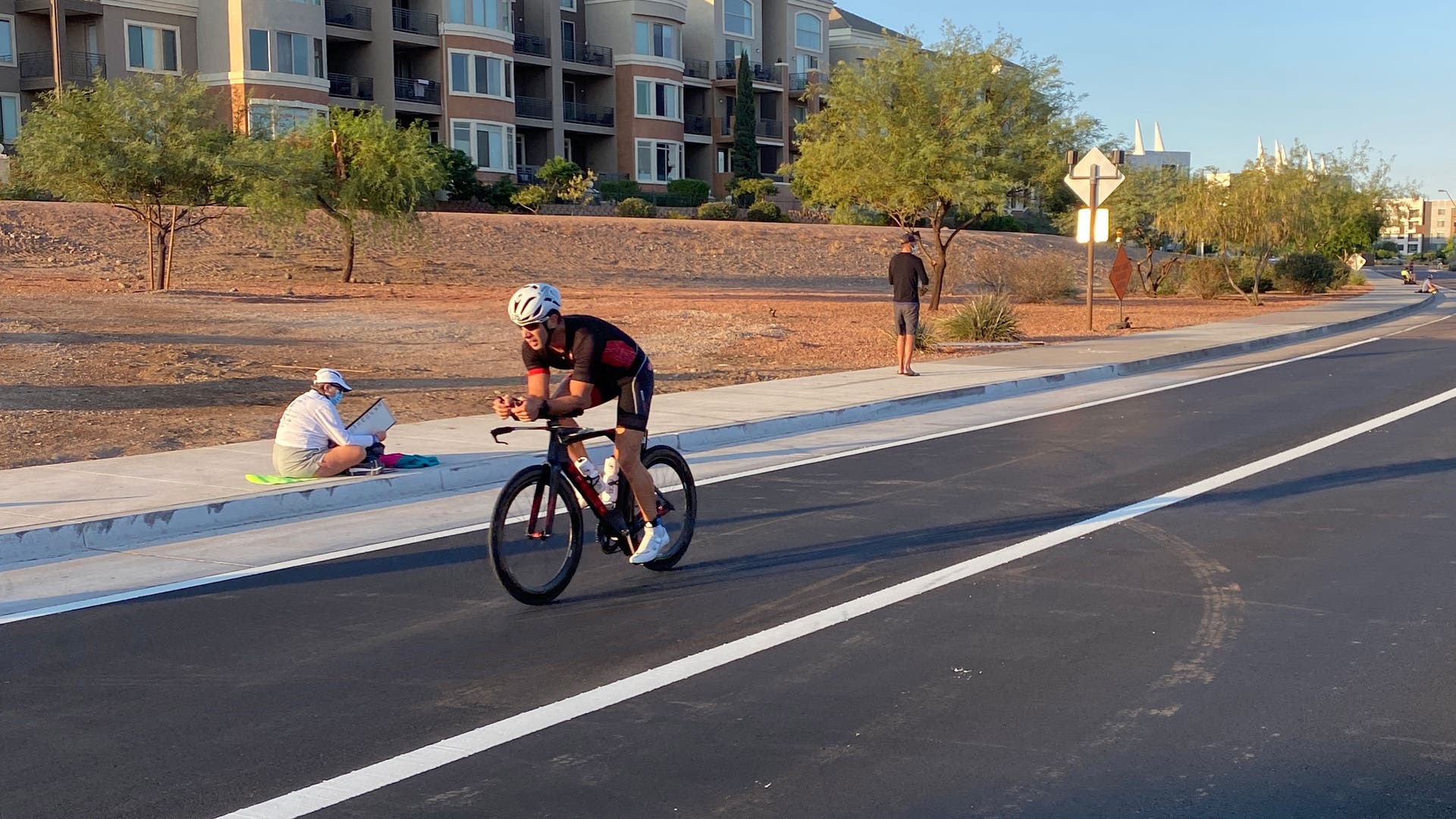
The Bike
From this part of the race on, there wasn’t too much that was different from what you’d expect at any other pre-pandemic 70.3 event. Again, the smaller number of athletes kept athletes fairly well distanced—even on a three-loop course. And of course, the beauty of a non-drafting race is that athletes are already encouraged to not get too close to other competitors.
The aid stations on the bike were mostly business-as-usual, except the volunteers wore masks and gloves. This was the only part of the race where volunteers handed athletes anything. Some athletes opted to self-support with extra bottles on their bike or even backpack hydration systems.

The Run
Like the bike, the run was pretty normal (and brutally hot). Athletes were well spread out on the two-lap course. Aid stations were fully stocked, but it was a self-serve situation with masked-up volunteers only there to restock the tables.
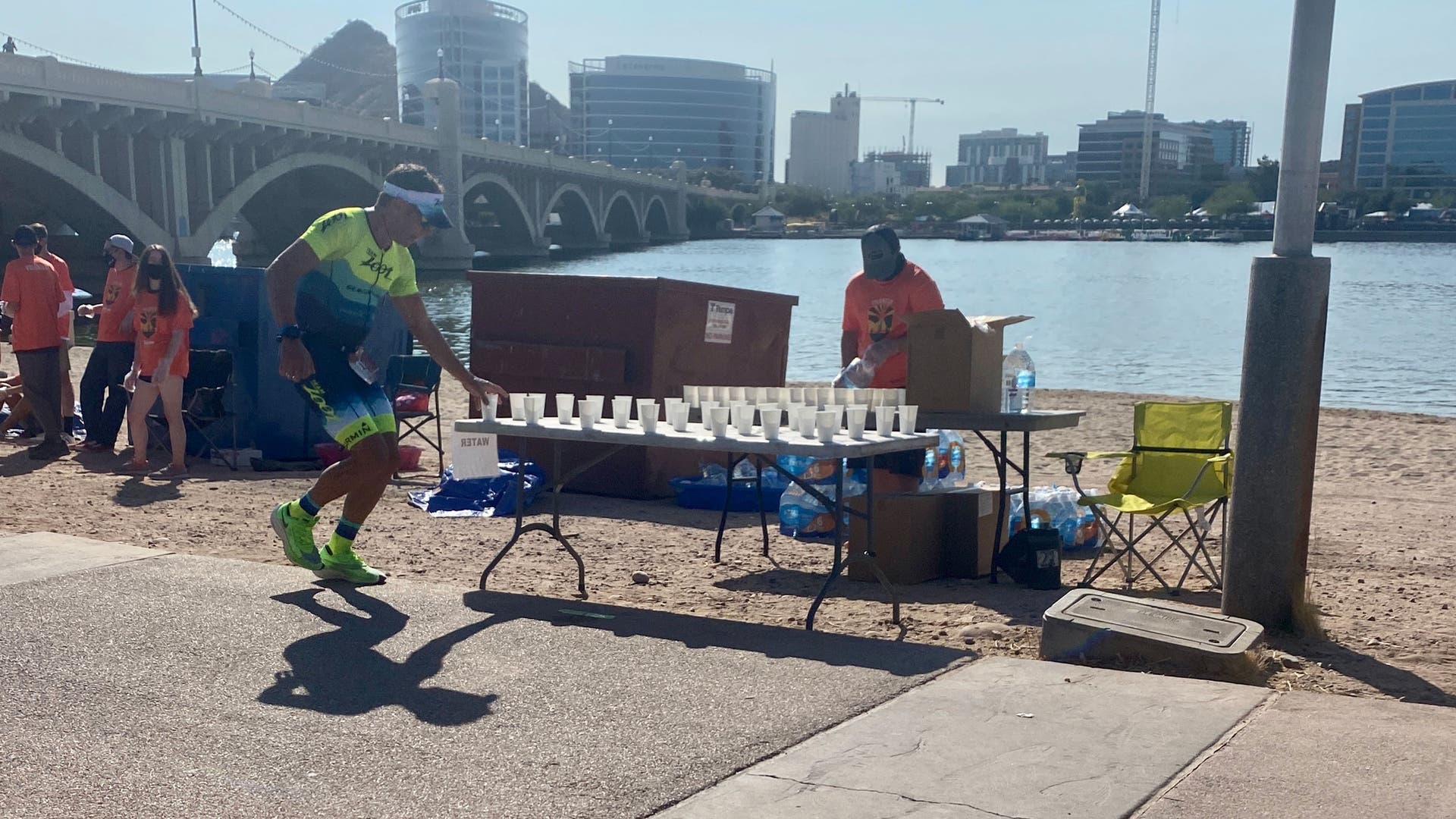
Finish Line
At some point during the morning, barricades were relocated to frame the finish line area. To enter the general Tempe Beach Park area, spectators were required to wear masks.
After athletes reached the finish line, they walked by tables that offered hydration and finishers’ medals. There were two buckets right at the exit for athletes to take off their timing chip and strap. From there, athletes grabbed a mask from a table and were required to put it on before exiting the finishers’ area.
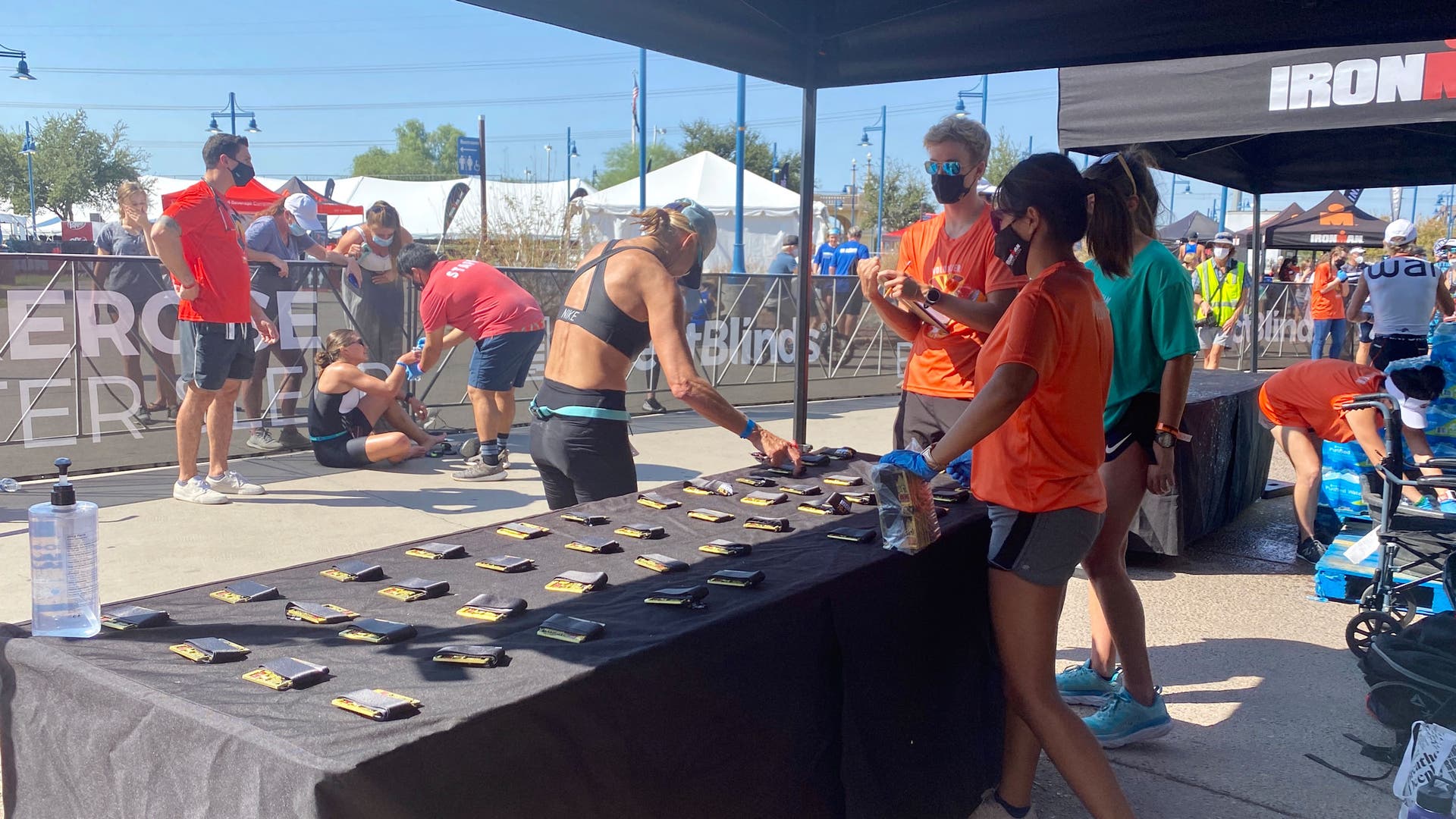
Conclusions
Should we be racing and should Ironman be holding events? If they do, should we, as athletes, even be going? These are all fair questions in the midst of a rise in COVID cases across the U.S. and given the risk of athletes traveling to and from an event, and carrying back the illness with them. (And, based on social media, these are also questions that triathletes have very strong opinions about.)
But, as long as concern has focused to date on the protocols specifically in place to minimize risk during the event (as opposed to travel risk or risk while dining out during race week, etc.), it’s fair to say that Ironman followed all the guidelines set out for them by state and local officials. It’s also fair to say that, given the smaller number of athletes and the willingness of the athletes to follow the new safety rules, it was probably the safest an event of this size could be and a glimpse into what racing in a pandemic will look like. Of course, that does not eliminate the risk of catching COVID or of spreading it, nor does it answer the question of if it’s a good idea to race and hold races—many states and local governments with stricter regulations will likely continue to ban large events of this size. And each athlete will have to decide if they choose to race.
Ironman also likely learned a few things through their first event in the U.S. and will hope to implement any changes a other American races still scheduled for 2020—Ironman 70.3 Gulf Coast and Ironman Florida (Nov. 7), Ironman 70.3 Texas (Nov. 22), Ironman Arizona (Nov. 22), and Ironman 70.3 Florida (Dec. 13)—and potentially for races even in the new year.